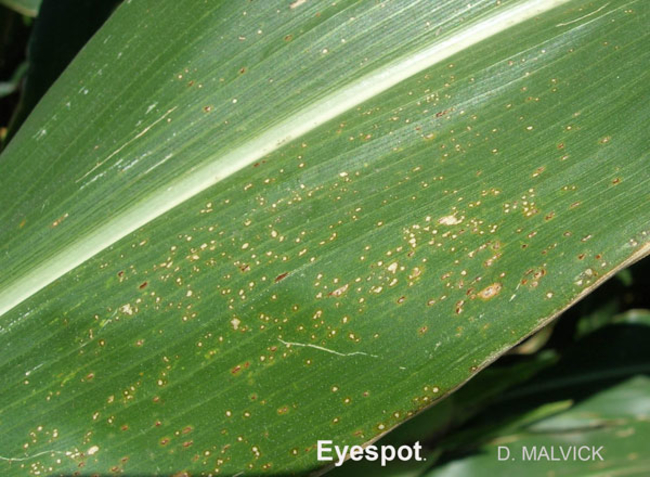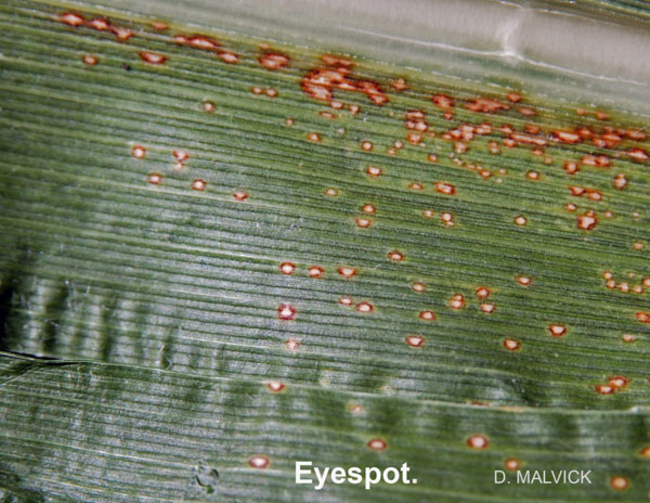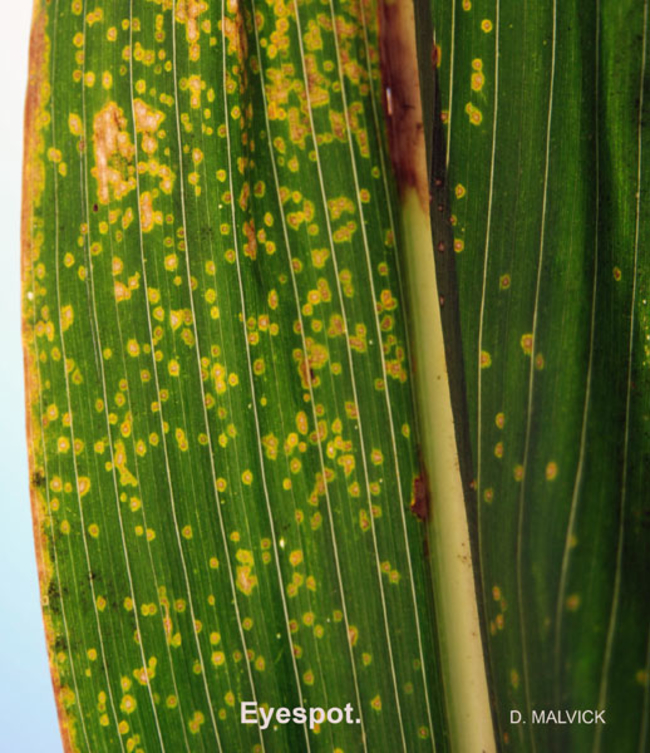Eyespot is most common across the northern areas of the Midwest. It is a residue- borne, fungal disease that occasionally reaches severity levels that can cause yield loss in susceptible hybrids inbreds. High disease levels that can result in yield loss usually occur in seed production fields, under no-till conditions, and when corn is planted sequentially for two or more years.
Symptoms
The first visible symptoms of eyespot are small, circular spots (1/16 inch to 1/8 inch diameter) that are water-soaked with yellow halos on leaves. These can occur as early as the V3/4 stage of vegetative growth. These lesions develop into an "eyespot", which is a tan spot surrounded by a brown to purple ring and narrow yellow halo. The spots can be scattered on leaves, but often appear in patches and can join together to form large necrotic areas. Lesions can sometimes develop on leaf sheaths and husks. The spots may sometimes be confused with a physiological or a genetic leaf spot.
Conditions and timing that favor disease
The pathogen favors cool temperatures, humid and wet conditions, continuous corn, conservation tillage, and susceptible corn hybrids/inbreds.
Causal pathogen
The pathogen is a fungus called Aureobasidium zeae (Kabatiella zeae). It overwinters in the residue from corn, which is its only reported host.
Disease management
Management strategies include using resistant corn hybrids, crop rotation, and tillage to reduce corn residue.
Reviewed in 2018




